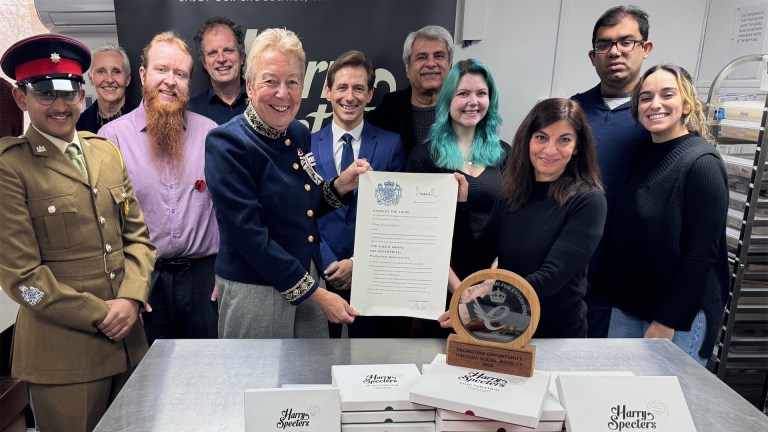What is the national living wage? How is it different to the minimum wage?
The government rebranded the national minimum wage for workers aged 23 or over as the “national living wage”. It tells employers the minimum hourly rate that they are legally allowed to pay their staff who are at least 23.
The national living wage is increasing to £11 in April, up from the current rate of £10.42.
Meanwhile the national minimum wage – the government’s term for the lowest legal wage given to workers aged between 16 and 22 – is likely to increase at different rates depending on a worker’s age.
It’s currently £10.18 if you’re 21-22, £7.49 if you’re 18 to 20 and £5.28 if you’re under 18.
Who is entitled to the national living wage?
The national living wage is for every worker who is at least 23-years-old, including agency workers, people on zero hour contracts and migrants.
What would be the annual salary for someone earning the national living wage?
The national living wage is usually an hourly rate – currently £10.42 – because annual pay will depend on how many hours are worked.
Advertising helps fund Big Issue’s mission to end poverty
But for someone working a full-time job at a 35-hour working week, gross income would work out at about £19,000 per year before tax or pension deductions.
Why is the minimum wage not a living wage?
The independent Low Pay Commission advises the UK government on the rate of pay for the national minimum wage and the national minimum wage.
But the Living Wage Foundation recommends higher pay through the real living wage because they simply believe the mandatory rate is not enough to live on.
The national minimum wage and the national living wage are largely set as income floors which wages should not fall below but are not designed to ensure workers can maintain a decent standard of living above the bare minimum.
The real living wage looks at various measures taking into account a family’s basic day-to-day needs including housing, food and clothing before setting their higher rate.
What is the real living wage?
Unlike the government-set national living wage, the ‘real living wage’ is a voluntary rate of pay that employers can choose to give to their staff.
Advertising helps fund Big Issue’s mission to end poverty
In many ways, the real Living Wage is self-explanatory – it’s paying someone enough money to live on. The Living Wage Foundation (LWF) sets the rate of pay based on up-to-date living costs, taking into account the cost of bills, the weekly shop and other measures.
It also applies to all workers over 18, whereas the government sets different minimum wage levels for 16 to 22-year-olds and over-23s.
This year, the LWF brought its annual rate calculation forward by two months, due to the escalating cost of living crisis and rapidly rising inflation. The foundation decided that an extra £1 an hour will be added to the pay packets of workers who earn the real Living Wage, or an extra 90p for those in London, bringing the rates up to £10.90 an hour across the UK and £11.95 an hour in London.
The 10.1 per cent pay rise was the biggest ever jump calculated by the foundation in its 11-year history, and takes into account inflation hitting 10.1 per cent in July, then 9.9 in August.
The next increase is due to be announced in October, and a “significant increase” is expected again.
Director of the Living Wage Foundation Katherine Chapman said: “A rise in the statutory national living wage from next April is welcome news for low paid workers, but may fall short of the real living wage next year, the only rate that is independently calculated based on the cost of living. The new real Living Wage rates will be announced later this month on 24 October, where we expect a significant increase.”
Advertising helps fund Big Issue’s mission to end poverty
Recent research from the Living Wage Foundation found 60% of people earning below the real living wage had used a food bank in the past year and nearly 40% were regularly skipping meals.
What is a Living Wage City-Region?
As part of the UK’s recovery from the pandemic, the campaign behind the real living wage is shifting from solely focusing on individual employers to also include regions
Greater Manchester Mayor Andy Burnham has stated his intention to turn Greater Manchester into the first real Living Wage city.
Following his re-election, Burnham formed a Living Wage City-Region action group to work towards the goal of ensuring all workers in the city will be paid the real Living Wage by the end of the decade.
The action group brings Burnham together with businesses, unions, local authorities, faith groups and voluntary and charitable organisations to set out how the plans will come into force.
The mayor announced that social care staff across Greater Manchester would be paid the real Living Wage.
Advertising helps fund Big Issue’s mission to end poverty
Implementing the pay level is a crucial part of ensuring that people “receive fair pay, have decent working conditions, and experience opportunities to develop and progress,” Burnham said.
“The pandemic has laid bare inequalities in our city-region. In this new era for this place, all parts of Greater Manchester will come together and deliver a fairer, greener, more prosperous conurbation for every person living and working here.”
He also announced that the local authority and its ten borough councils would only procure from companies that pay their staff the living wage by 2023.
What would be the annual salary for someone earning the real Living Wage?
For someone working a full-time job at a 35-hour working week earning the real Living Wage of £10.90, an hour, their gross income would be about £19,838 a year before tax or pension deductions.
If they were working in London, that would rise to £21,749, on an hourly rate of £11.95
The new rates are now worth almost £1,000 more a year than the government’s national minimum wage, and almost £3,000 more in London.
Advertising helps fund Big Issue’s mission to end poverty
What about a £15 minimum wage?
There has been a strong campaign to raise the minimum amount employers can pay their workers to the real living wage, but some are saying that is still not enough.
A £15 minimum wage was thrown into the spotlight after being backed at the Labour Party conference last year as part of a “new deal for working people.”
Unions are leading the way in demanding the government find ways to boost the economy, with many throwing their weight behind the campaign.
The Trades Union Congress has unveiled a “road map” to a £15 minimum wage in the UK, calling on the prime minister to deliver a high wage economy as the country faces a deepening cost of living crisis.
“Every worker should be able to afford a decent standard of living,” said Frances O’Grady, general secretary of the TUC. “But millions of low-paid workers live wage packet to wage packet, struggling to get by – and they are now being pushed to the brink by eye-watering bills and soaring prices.”
The solution, according to a report laying out the proposals, is to set a new minimum wage target at 75 per cent of median hourly pay. This would see the minimum wage rise at a rate on par with average wages, making sure that those earning the least don’t fall too far behind.
Advertising helps fund Big Issue’s mission to end poverty
The TUC is calling on the government to work with the Low Pay Commission (LPC) to deliver this “as soon as possible” – with the roadmap detailing how this would be economically viable by 2030.









